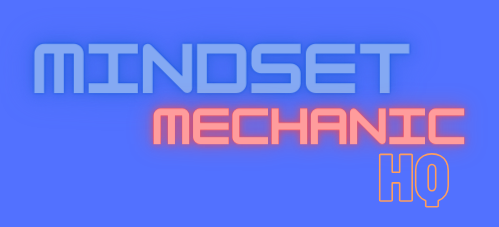We’re about to embark on an exciting journey of self-discovery and growth.
In this enlightening piece, we’ll unveil the 12 essential steps to mastering a growth mindset.
We’re not just cracking the code to personal development, we’re smashing through barriers.
Ready to transform challenges into opportunities and embrace lifelong learning?
Let’s dive in and unlock your untapped potential together.
Key Takeaways
- Abilities are expandable through effort and learning
- Challenges should be viewed as opportunities for growth
- Embrace the power of “yet” and shift from incapability to promise
- Perseverance, learning from failures, cultivating curiosity and creativity, and developing a positive self-image are essential for mastering a growth mindset.
Understanding the Growth Mindset
To truly master a growth mindset, we’ve got to first grasp the concept’s core essence – that our abilities aren’t fixed, but are expandable through consistent effort and learning. This understanding isn’t an abstract theory; it’s a tangible truth that rings true in every aspect of our lives. It’s a belief that forms the bedrock of our personal and professional development, paving the way for becoming better versions of ourselves.
The term ‘growth’ in growth mindset, essentially, is the antithesis to a ‘fixed’ mindset. When we adopt a growth mindset, we’re embracing the idea of expansion, improvement, and continuous learning, rather than remaining stuck in our current state. It’s a powerful conviction that we aren’t static beings, but dynamic individuals capable of change and development.
This mindset goes beyond mere optimism or positive thinking. It’s about resilience, the ability to bounce back from setbacks, and the steadfast resolve to keep learning, evolving, and improving. It’s about recognizing that each challenge we face is an opportunity for growth, every failure a stepping stone to success.
Having a growth mindset means that we’re not afraid of making mistakes. We see them as part and parcel of the learning process, not as indictments of our abilities. We believe in the potential for change and development, underlining that we can enhance our abilities over time with the right mindset and actions.
Understanding and embracing a growth mindset is key to fostering a mentality geared towards continuous learning and improvement. It’s the linchpin for better living, providing a solid foundation for achieving our aspirations.
Shifting From Fixed to Growth Mindset
Moving from a fixed to a growth mindset, we’re embarking on a journey towards unending development and potential. This isn’t a journey we’re taking alone, but together in a community of like-minded individuals, all striving to better ourselves and each other.
The first step is acknowledging the need for a shift. We must recognize that our current mindset may be limiting our progress and potential. A fixed mindset is like a closed door, keeping us in a room of stagnation and fear. We’re afraid to fail, we avoid challenges and our growth becomes stagnant. However, we’ve the key to unlock that door and step into a realm of continuous learning, resilience, and improvement. That key is the growth mindset.
Shifting to a growth mindset is a transformative process. It’s about altering our views on challenges and failures, not seeing them as threats, but as avenues for growth and understanding. With this shift, we’re not just surviving, we’re thriving, armed with the belief that our abilities aren’t static but can be developed with effort, the right strategies, and support from others.
This shift isn’t just about achieving more or being more successful. It’s a cornerstone for better living. It nurtures a proactive, engaged, and optimistic approach to life’s ups and downs. So, let’s take this journey together, fostering a growth mindset that fuels personal and professional success, and most importantly, allows us to truly live and not just exist.
Embracing the Power of Yet
In our journey towards mastering a growth mindset, we’ll discover the transformative power of the word ‘yet’. This seemingly insignificant word carries a potent message of hope and potential.
When faced with a challenge, it’s easy for us to say, “I can’t do this.” But by adding ‘yet’ to that sentence, we shift the narrative from a conclusion of incapability to a promise of potential.
The magic of ‘yet’ lies in its ability to encapsulate the core principle of a growth mindset. It promotes a belief in personal growth and betterment. Instead of seeing challenges as roadblocks, we start to view them as stepping stones towards mastery. It’s not about denying the difficulty of the task at hand, but rather acknowledging that with effort, time, and persistence, we can develop the capabilities needed to surmount these challenges.
The use of ‘yet’ is more than just a linguistic trick; it’s a mindset shift. It’s a way of embracing challenges as opportunities for development and promoting a proactive attitude towards learning and self-improvement. It aligns perfectly with the ethos of a growth mindset, encouraging us to stay hopeful about our future and remain committed to our journey towards mastery.
In essence, ‘yet’ is an affirmation of our ability to grow, to learn, and to overcome. So, let’s embrace the power of ‘yet’. Let’s let it fuel our drive for self-improvement, reminding us always that we’re capable of far more than we might currently believe.
The journey might be challenging, but remember, we’re not there…yet.
The Importance of Lifelong Learning
Building on our understanding of the power of ‘yet’, we’ll now explore the crucial role of lifelong learning in cultivating a growth mindset. As we strive to evolve, to develop, and to better ourselves, this continuous pursuit of knowledge becomes our guiding beacon. We must embrace a commitment to never stop learning, to remain curious, and to welcome new experiences with open arms.
Engaging in lifelong learning isn’t a chore, but a choice. A choice that empowers us to view our abilities not as fixed, but as malleable components of our personality that can be honed and improved over time.
To help us on our journey, let’s consider four strategies:
- Always stay curious: Maintain an insatiable appetite for knowledge.
- Embrace new experiences: They’re the different classes that life offers.
- View failures as learning opportunities: They aren’t dead-ends but detours guiding us to the correct path.
- Stay relevant: Continuous learning keeps us updated, adaptable, and innovative.
By adopting these strategies, we create a fertile ground where a growth mindset can thrive. We foster a sense of belonging to a community of learners, all striving to better themselves and each other.
Lifelong learning isn’t just about personal growth; it’s also about professional development. It’s about staying relevant in our fields, embracing adaptability, and fueling innovation.
Stay tuned as we delve into the subsequent section, ‘Transforming Challenges into Opportunities,’ where we’ll learn how to turn roadblocks into stepping stones.
Transforming Challenges Into Opportunities
While we’re on the path of lifelong learning, it’s important to remember that we’ll inevitably encounter challenges, which, if viewed through the lens of a growth mindset, can be transformed into opportunities. Instead of seeing these hurdles as roadblocks, we can view them as chances for development and innovation. It’s about flipping the script on adversities, making an active effort to reframe our challenges, seeing them as potential rather than defeat.
When faced with obstacles, we shouldn’t shy away. Instead, let’s dig deeper, seek solutions, and learn from the situation. By transforming stumbling blocks into stepping stones, we’re not just overcoming challenges, but leveraging them to learn, improve, and possibly find new, better ways of doing things. This proactive approach embodies resilience and optimism, fostering a culture of continuous learning and improvement.
Imagine a world where each challenge is seen as a call to grow, learn, and improve. That’s the essence of a life lived with a growth mindset. It encourages us to be better, stronger, more adaptive individuals – better prepared for the fast-paced, ever-evolving world we live in.
The Role of Perseverance in Growth
Following our exploration of transforming challenges into opportunities, we now turn our focus to the pivotal role of perseverance in growth. Embracing the journey of personal or professional development means encountering hurdles. It’s here that perseverance becomes our steadfast ally, helping us navigate through these rough patches and maintain the momentum of growth.
Perseverance fuels our journey, aligning with the idea of seeing potential in adversity, a defining trait of the growth mindset. It’s about having the grit to continue learning, evolving, and striving towards our goals, even when the going gets tough.
- Resilience: Perseverance cultivates a resilient spirit that enables us to bounce back from setbacks. It’s not about never falling, but about always getting back up.
- Constant Learning: It fosters a culture of continuous learning, effort, and improvement. We become lifelong learners, always seeking to expand our horizons.
- Deeper Understanding: Through perseverance, we develop a deeper understanding and enhance our skills. We learn not only from our successes but also from our failures.
- Broader Perspective: By persisting, we gain a broader perspective, understanding that setbacks are stepping stones, not stumbling blocks.
This tenacious spirit not only propels us towards achieving our aspirations but also contributes significantly to personal and professional success. We become part of a community that values effort and growth, where we belong and are understood.
Learning From Failures
Although we’ve seen how perseverance plays a crucial role in our growth journey, it’s equally important to understand that we can, and should, learn from our failures. Let’s face it, failure can be tough. It’s often accompanied by disappointment, regret, and self-doubt. But if we view failure through the lens of a growth mindset, it transforms into a powerful tool for learning.
Instead of fearing failure, we can embrace it as an opportunity to learn and grow. When things don’t go as planned, we don’t have to wallow in disappointment. By dissecting our failures and understanding what went wrong, we can glean invaluable insights that propel us towards success.
This isn’t about making light of our mistakes, but about learning from them. It’s about transforming our outlook on failure from a dead-end into a feedback mechanism. It’s about seeing every setback not as a roadblock, but as a stepping stone on our journey to mastery.
Learning from failure fosters resilience. It encourages problem-solving and nurtures a culture of continuous improvement. It aligns perfectly with the ethos of a growth mindset, which is all about embracing challenges and learning from them to evolve.
Cultivating Curiosity and Creativity
After embracing the lessons we can learn from our failures, the next crucial step in mastering a growth mindset is to cultivate an insatiable curiosity and boundless creativity. These two elements act as the sparks that ignite the flame of a growth mindset, leading us towards a life of exploration, learning, and innovation.
Curiosity and creativity aren’t just traits we’re born with. They’re skills we can develop and nurture. So, how can we cultivate these qualities to fuel our growth mindset?
- Ask Questions: Foster your curiosity by asking more questions. There’s no such thing as a stupid question. The more we question, the more we learn.
- Seek New Experiences: Step outside your comfort zone. New experiences expand our perspectives and spark our creativity.
- Embrace Challenges: Don’t shy away from challenges. They force us to think differently and come up with creative solutions.
- Learn from Failures: Each failure is a lesson. Embrace them as opportunities for growth and innovation.
Together, curiosity and creativity create a fertile ground for the seeds of a growth mindset to germinate and flourish. They propel us towards a life of exploration, learning, and innovative thinking—essentials for better living. Through this cultivation, we’re not just equipped to navigate the world, but to question, learn, and innovate, thereby growing and making unique contributions to our personal and professional spheres.
Developing a Positive Self-Image
Continuing our journey towards mastering a growth mindset, let’s now delve into the crucial aspect of developing a positive self-image. This isn’t just about seeing ourselves through rose-colored glasses—it’s about aligning our self-perception with reality, while maintaining an optimistic and forward-looking stance.
Our self-image, the way we perceive our abilities, value, and potential, is a powerful catalyst in embracing a growth mindset. We must view ourselves as works in progress, with endless potential for development. This perspective cultivates a friendly attitude towards challenges, mistakes, and learning opportunities, transforming them into stepping stones for self-improvement rather than threats to our self-worth.
Developing a positive self-image isn’t an overnight task, it requires effort and commitment. It involves recognizing our current abilities while remaining open to the prospect of growth. It’s about cultivating resilience and self-confidence, and fostering a proactive approach towards personal and professional development.
With a positive self-image, we’re encouraged to step out of our comfort zones, face challenges head-on, and extract lessons from our experiences. This mindset is integral for thriving in various aspects of life. It equips us to navigate life’s ups and downs, continually learn, grow, and ultimately, lead a fulfilling and productive life.
As we build our positive self-image, we’ll realize that the way we perceive ourselves dictates our response to the world around us. In the next section, we’ll discuss how constructive criticism can be a powerful tool in shaping this self-image and driving our growth.
The Impact of Constructive Criticism
As we cultivate our positive self-image, it’s essential to understand the significant role constructive criticism plays in our journey towards mastering a growth mindset. Constructive criticism, when delivered and received well, acts like a mirror, reflecting our areas of improvement and guiding us towards continual development.
Here’s how it impacts our growth:
- Unveils Areas for Improvement: Constructive criticism provides insightful feedback, pointing out where we can do better. It’s not about dwelling on weaknesses but about identifying opportunities for growth.
- Fosters Accountability and Self-Awareness: When we’re open to constructive criticism, we become more self-aware and accountable. We’re able to acknowledge our mistakes and take responsibility for our growth.
- Facilitates Continuous Learning: Constructive criticism encourages a culture of continuous learning. Each piece of feedback is an opportunity to learn something new and refine our skills.
- Builds a Growth-Oriented Environment: A willingness to give and receive constructive criticism cultivates a growth-oriented environment. It fosters open communication and a community that supports collective and individual improvement.
In essence, constructive criticism is a tool for refining our strategies and enhancing our understanding, crucial for personal and professional growth. It aligns with the ethos of a growth mindset – viewing challenges and feedback as opportunities to learn and improve.
Embracing Change and Adaptability
In our journey towards mastering a growth mindset, we’ll find that adaptability is our greatest ally and change is our most effective teacher. Change, though sometimes daunting, is the only constant in life. It’s a natural part of our existence, compelling us to learn, evolve, and become better versions of ourselves. It’s about looking at the unfamiliar and seeing not fear, but opportunity. We can’t control the winds of change, but we can adjust our sails.
Adaptability, then, is the practical application of our growth mindset. It’s our ability to swiftly and efficiently adjust to new conditions, to thrive amidst change. We’re not just enduring the waves, we’re learning to surf. This resilience, this continuous learning, is what enables us to navigate life’s ever-changing scenarios with grace.
But embracing change and becoming adaptable isn’t always easy. It requires a shift in perspective, a willingness to step out of our comfort zones. We must be open to new experiences, eager for new knowledge, and accepting of the uncertainty that comes with change. It’s about growing through what we go through.
Together, embracing change and adaptability form a robust framework that propels us towards a life of continuous evolution and success, regardless of the external conditions. By fostering a culture of learning, problem-solving, and innovation, we not only survive, but thrive.
Maintaining Your Growth Mindset
Often, we’ll find that maintaining our growth mindset requires consistent effort and self-awareness. It’s an ongoing journey of self-discovery, resilience, and commitment to personal and professional development. It’s about cultivating curiosity, openness, and a relentless pursuit of growth, despite the inevitable obstacles and changes we might encounter.
To help us on this journey, here are four key practices we can adopt:
- Seek Regular Feedback: This helps us identify areas of improvement and provides us with the guidance needed to grow and improve.
- Set Personal and Professional Goals: Having clear goals keeps us focused and motivated. It pushes us to stretch our capabilities and constantly strive for better.
- Foster a Supportive Environment: By surrounding ourselves with people who encourage and inspire us, we create a culture that nurtures learning and improvement.
- Celebrate Small Wins and Learn from Setbacks: Every accomplishment, no matter how small, is a step towards growth. Similarly, every setback is a learning opportunity.
Maintaining a growth mindset isn’t just about personal development. It also fosters a sense of belonging, as we work together towards our goals, supporting and learning from each other. It’s about creating a community of lifelong learners, who believe in the power of growth and the potential within each of us.
Let’s remember, maintaining a growth mindset isn’t a destination, but a journey. As we navigate life’s ups and downs, let’s stay focused on our path, celebrating our progress, and always striving for growth. After all, we’re in this together.







